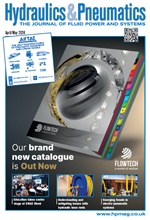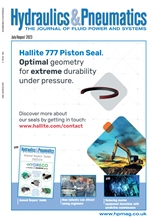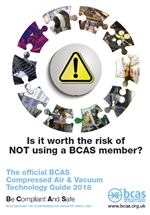Ceramic bearings for medical robots

Ceramic bearings allow high speeds, low noise and non-magnetic properties in medical devices. Chris Johnson, managing director at specialist ceramic bearings supplier SMB Bearings, explains why ceramic high-precision bearings hold the answer
Robots are on the rise in medical environments and are being increasingly relied-upon to carry out more complex procedures. Although martensitic stainless steels have been favoured for bearings in robot applications, their performance is falling short against rising standards to prevent contamination in medical environments.
Analyst GlobalData predicts the medical robotics market will rise from $4.7 billion in 2020 to $14.5 billion in 2030, and those robots will “be cast more as companions providing emotional support, rather than seen as tools.” The quote refers to artificial intelligence (AI) becoming more advanced, allowing robots to offer increasingly therapeutic support to patients in ways we can’t imagine today, and counter staff shortages.
From surgical assistance robots that help perform minimally invasive surgeries, to AI-equipped therapeutic robots used in rehabilitation for injuries and paralysis, medical robots have come a long way since simple robotic arm technologies were first introduced in the 1980s. Although surgical robots are becoming cheaper, modern medical applications are also demanding higher precision and speed capabilities from these robots.
Traditionally, in medical instruments, bearings — that optimise the rotation of axes like robot arms by limiting or avoiding friction and jolts — have been made from high purity metals such as martensitic stainless steel. Examples include medical robots that help undertake keyhole surgery where the utmost precision is required. Surgical robot bearings must deliver the highest possible rotational accuracy, while also being small enough to fit into these often compact and portable hospital devices.
However, steel bearings have limitations including contamination. While steel bearings are tough and capable of withstanding highly-corrosive environments, they are susceptible to particulate contamination due to the very high cotact pressures against the steel within the bearing while it moves. If left unchecked, this contamination can cause denting and wear.
Of course, contamination in general is unacceptable in health and safety environments. As robots become more prevalent in medical applications, regulations are getting stricter in order to prevent contamination.
Replacing steel
The need to avoid contamination accompanies other design requirements such as high speeds, low noise and non-magnetic properties. For instance, because Magnetic Resonance Imaging (MRI) scanners use a strong magnetic field to generate two- or three-dimensional images of any living subject, steel bearings cannot be used due to their magnetic properties.
All of these factors influence the choice of material for bearings in medical environments — but what material can replace steel? The medical equipment sector is increasingly choosing bearings made exclusively of zirconia (ZrO2), or other exotic ceramic compounds. According to the Institute of Materials, Minerals and Mining, “ceramic bearings made from ZrO? are tough with similar expansion properties to chrome steel and 440 stainless steel, although they are 30% lighter.”
-
Smart Manufacturing & Engineering Week
05 - 06 June, 2024
NEC, Birmingham -
HILLHEAD 2024
25 June, 2024, 9:00 - 27 June, 2024, 16:00
Hillhead Quarry, Buxton, Derbyshire UK










